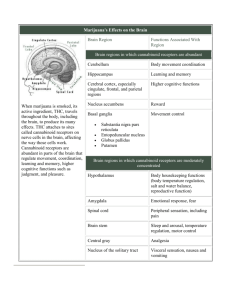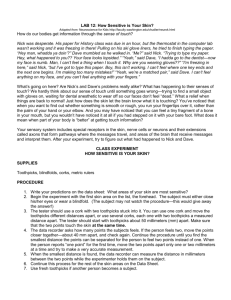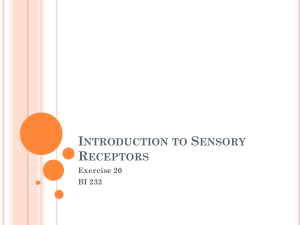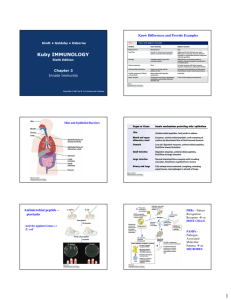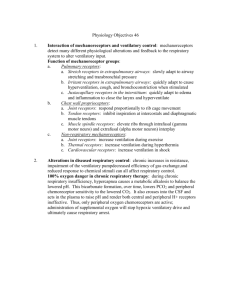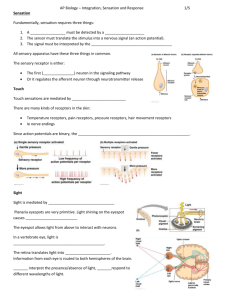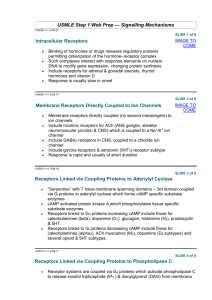Two point discrimination lab
advertisement
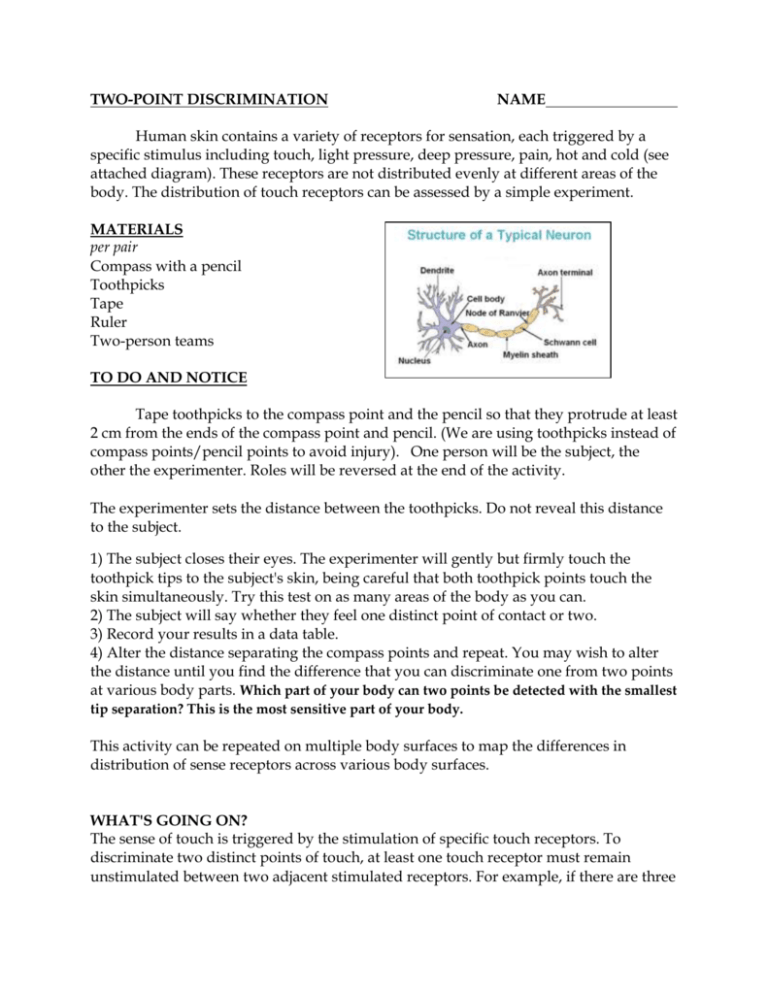
TWO-POINT DISCRIMINATION NAME Human skin contains a variety of receptors for sensation, each triggered by a specific stimulus including touch, light pressure, deep pressure, pain, hot and cold (see attached diagram). These receptors are not distributed evenly at different areas of the body. The distribution of touch receptors can be assessed by a simple experiment. MATERIALS per pair Compass with a pencil Toothpicks Tape Ruler Two-person teams TO DO AND NOTICE Tape toothpicks to the compass point and the pencil so that they protrude at least 2 cm from the ends of the compass point and pencil. (We are using toothpicks instead of compass points/pencil points to avoid injury). One person will be the subject, the other the experimenter. Roles will be reversed at the end of the activity. The experimenter sets the distance between the toothpicks. Do not reveal this distance to the subject. 1) The subject closes their eyes. The experimenter will gently but firmly touch the toothpick tips to the subject's skin, being careful that both toothpick points touch the skin simultaneously. Try this test on as many areas of the body as you can. 2) The subject will say whether they feel one distinct point of contact or two. 3) Record your results in a data table. 4) Alter the distance separating the compass points and repeat. You may wish to alter the distance until you find the difference that you can discriminate one from two points at various body parts. Which part of your body can two points be detected with the smallest tip separation? This is the most sensitive part of your body. This activity can be repeated on multiple body surfaces to map the differences in distribution of sense receptors across various body surfaces. WHAT'S GOING ON? The sense of touch is triggered by the stimulation of specific touch receptors. To discriminate two distinct points of touch, at least one touch receptor must remain unstimulated between two adjacent stimulated receptors. For example, if there are three touch receptors in a row and all three are being stimulated, the touch would be perceived as only one point. If the middle receptor was not stimulated and the lateral two were stimulated, the two lateral receptors would send two distinct signals and the sensation of touch would be perceived as two distinct spots being touched. Since touch receptors are distributed sparsely on some body areas, such as backs, knees and elbows, and densely on other areas such as the palms of the hands and lips, the distance needed to discriminate between two tiny point sources of touch may be large on some body areas and small on other parts. SO WHAT? This test is one actually used by neurologists in assessment of nervous system function. Receptors in the skin. All of the tactile receptors are actually modified dendrites. Palm surface of the fingertips: 60 pain, 100 touch receptors Back of finger: 100 pain, 9 touch receptors TWO POINT DISCRIMINATION DISCOVERIES Create a data table showing the areas of the body that were tested and the distances and the amount of points the test subject was able to detect at those distances. 1. Which area(s) were most sensitive? What does this say about the number of receptors in this/these area(s)? 2. Which area(s) were least sensitive? What does this say about the number of receptors in this/these area(s)? 3. Why do you think that our bodies have different densities of receptors in different areas? How does this help humans survive/interact with their environment? Below, you need to draw on the human body outlines to show how sensitive the areas are to the sense of touch. Create a key below the outlines showing the amount of distance needed to feel two pressure points. The key should have a color or pattern next to each distance (ex. 2mm ). Front Back Site Threshold Distance Fingers 2-3 mm Upper Lip 5 mm Cheek 6 mm Nose 7 mm Palm 10 mm Forehead 15 mm Foot 20 mm Belly 30 mm Forearm 35 mm Upper arm 39 mm Back 39 mm Shoulder 41 mm Thigh 42 mm Calf 45 mm



